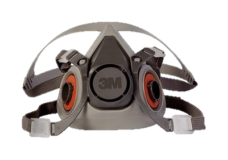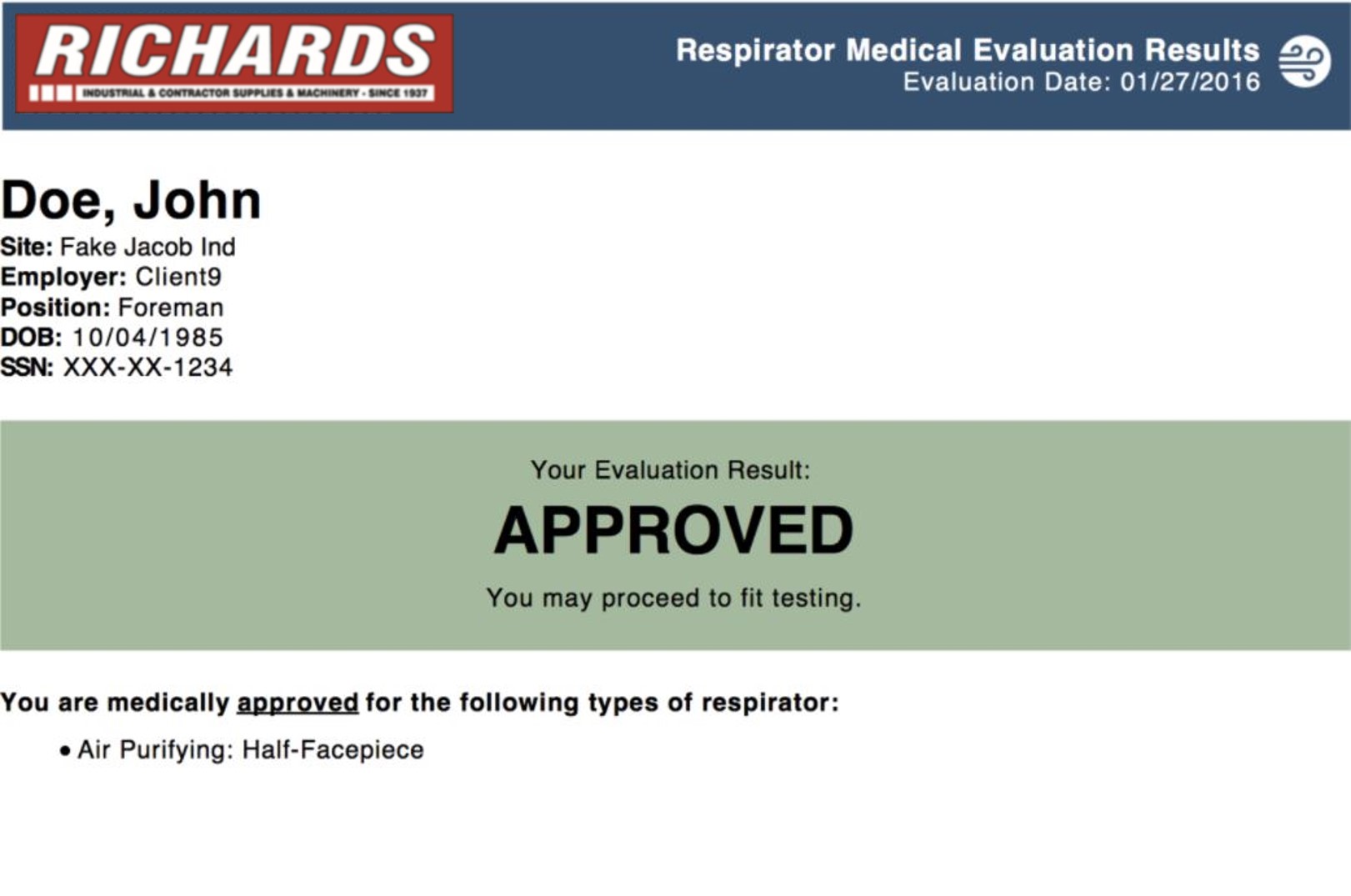RESPIRATORY SAFETY |
When establishing or updating a respiratory program, the amount of information can be overwhelming. Below are the basic steps, needed to help you stay compliant and keep your employees safe.
OSHA requires that a before an employee can use a required respirator, they be fit-tested to the specific style, make, model and size of the respirator. Fit-testing is not required for voluntary use, but it is recommended.
RESPIRATOR
FIT-TESTING
FIT-TESTING
|
FIT TEST MUST BE PERFORMED:
|
Before using a respirator
Annually
If there is any change in the respirator being used
If there are any facial changes that may affect fit, such as dental work, or significant weigh fluctuation.
TWO TYPES OF FIT-TESTS
TWO TYPES OF FIT-TESTS
QLFT
QUALITATIVE FIT-TEST
Negative-pressure, air-purifying respirators, if they’ll only be used in atmospheres where the hazard is at less than 10 times the permissible exposure limit (PEL).
Tight fitting facepieces used with powered and atmosphere-supplying respirators.
Can use one of four different test agents:
- Irritant Smoke
- Saccharin (sweet taste)
- Bitrex® (bitter taste)
- Isoamyl acetate (banana scent)
QNFT
QUANTITATIVE FIT-TEST
A Quantitative fit test (QNFT) can be used to fit-test any tight-fitting respirator. It involves using an instrument to measure leakage around the face seal and produces a numerical result called a “fit factor.” There are three OSHA-accepted QNFT test protocols:
- Generated aerosol uses a non-hazardous aerosol such as corn oil generated in a test chamber.
- Condensation nuclei counter (CNC) uses ambient aerosol and doesn’t require a test chamber.
- Controlled negative pressure (CNP) uses a test that creates a vacuum by temporarily cutting off air. (There is also a fourth method, which is an abbreviated version of this one.)
RICHARDS ONLINE MEDICAL RESPIRATOR EVALUATION
Richards offers medical respirator evaluations online! You can manage all of your companies medical evaluations easily and efficiently! House all evaluations online, save
- Access Medical Evaluations Anytime
- Quickly Process Evaluations
- Save Money over Physical Evaluations
- Pull Reports Anytime!
- Store Fit-Test Results
In most applications, a respirator fit-test is an OSHA requirement. It is a test that determines if respirator being used is the correct size and fits properly. During a fit-test, instruction is provided on the proper use and care. If the respirator is required, then so is a fit test. This applies to all types of respirators (full-face, half-face & disposable).
There are several actions that must be taken before a respirator is used. They include having a written program, the employees medically cleared, fit-tested and trained before using a respirator. That is just part of a complete respiratory program. Richards provides an online Medical Evaluation service, that meets OSHA requirements, as well as assistance with the fit-testing procedure.
Breathing through a respirator is harder than breathing in open air. People with lung diseases such as asthma or emphysema, elderly people, and others may have trouble breathing. Some people with claustrophobia may not be able to wear a mask or hooded respirator. That is why being medically cleared is an OSHA requirement.
Yes, if a dust-mask, such as a disposable N95, is required in the workplace, then fit-testing is mandatory. If it is only being used in a voluntary basis, then no.
While OSHA does not specifically ban beards, there can not be any facial hair (or piercings) that interfere with the respirator seal. Most mustaches and small goatees are ok. Remember, being clean-shaven for a fit-test is just the beginning. If you are required to wear a respirator then it is your responsibility to make sure you have a tight seal every time you put one on. That means being clean-shaven everyday that wear a respirator. This is for your health and safety.
The PAPR (Powered Air Purifying Respirator) fit test is conducted with the blower turned off. Loose-fitting respirators, such as PAPRs, in which the hood or helmet is designed to form only a partial seal with the wearer's face or hoods which seal loosely around the wearer's neck or shoulders, do not require fit testing. This is an option for people, for whatever reason, cannot pass a fit-test for a tight-fitting respirator.
Testing may be performed on workers who perform jobs that may cause exposure to possible lung hazards, are physically demanding, or require wearing a respirator. The test shows how well you can move air in and out of your lungs. Spirometry testing is required for some workers by OSHA standards. PFT is required in the medical surveillance provisions of specific OSHA standards, such as 29 CFR 1910.1001, Asbestos; 29 CFR 1910.1043, Cotton Dust; 29 CFR 1910.1028, Benzene; and 29 CFR 1910.1048, Formaldehyde. These standards require that the employer provide medical surveillance examinations to certain employees.




















